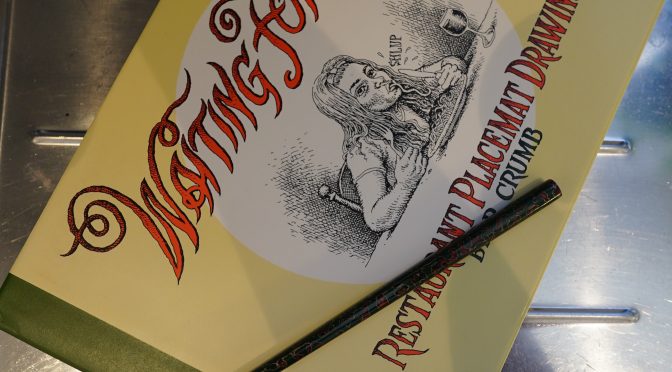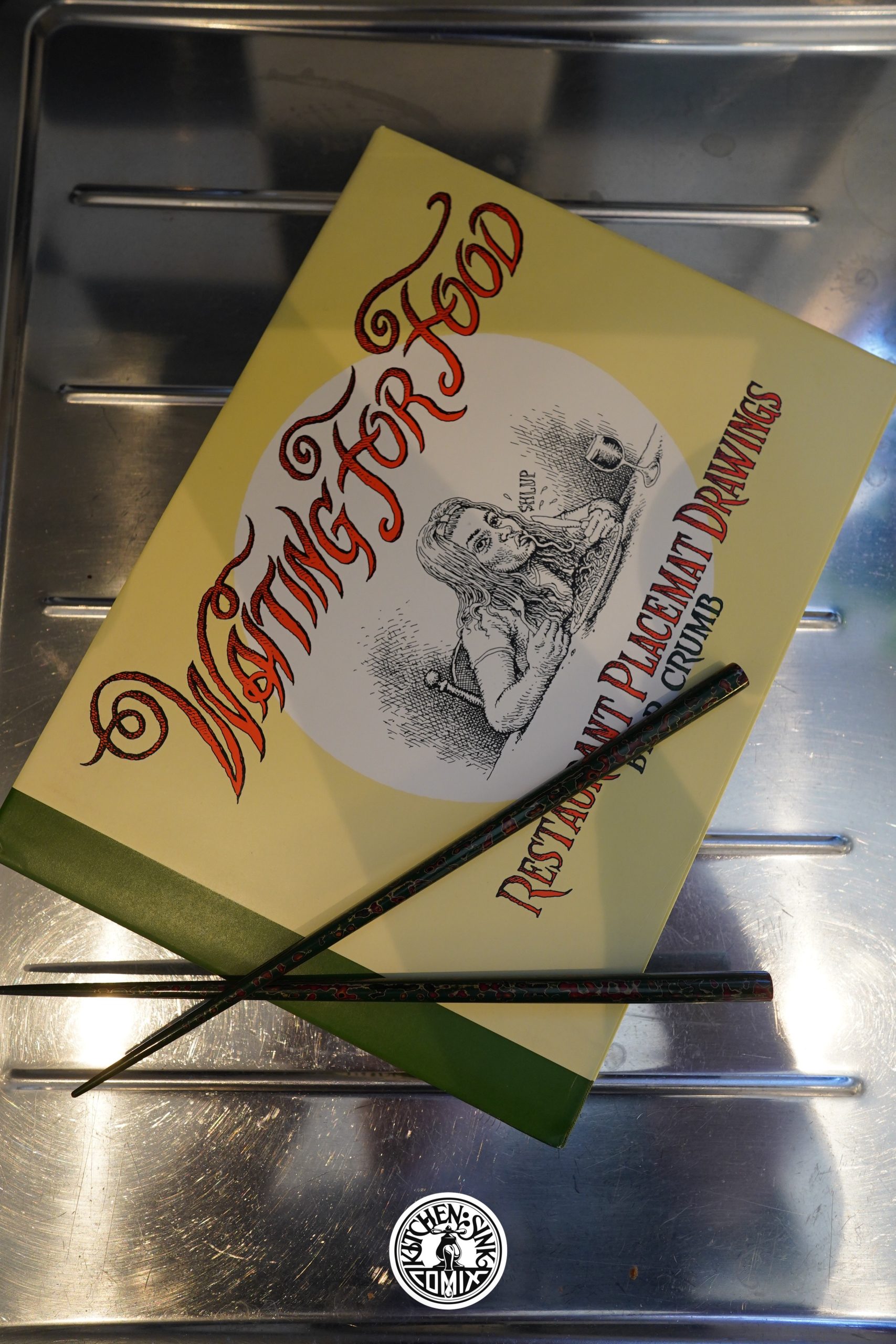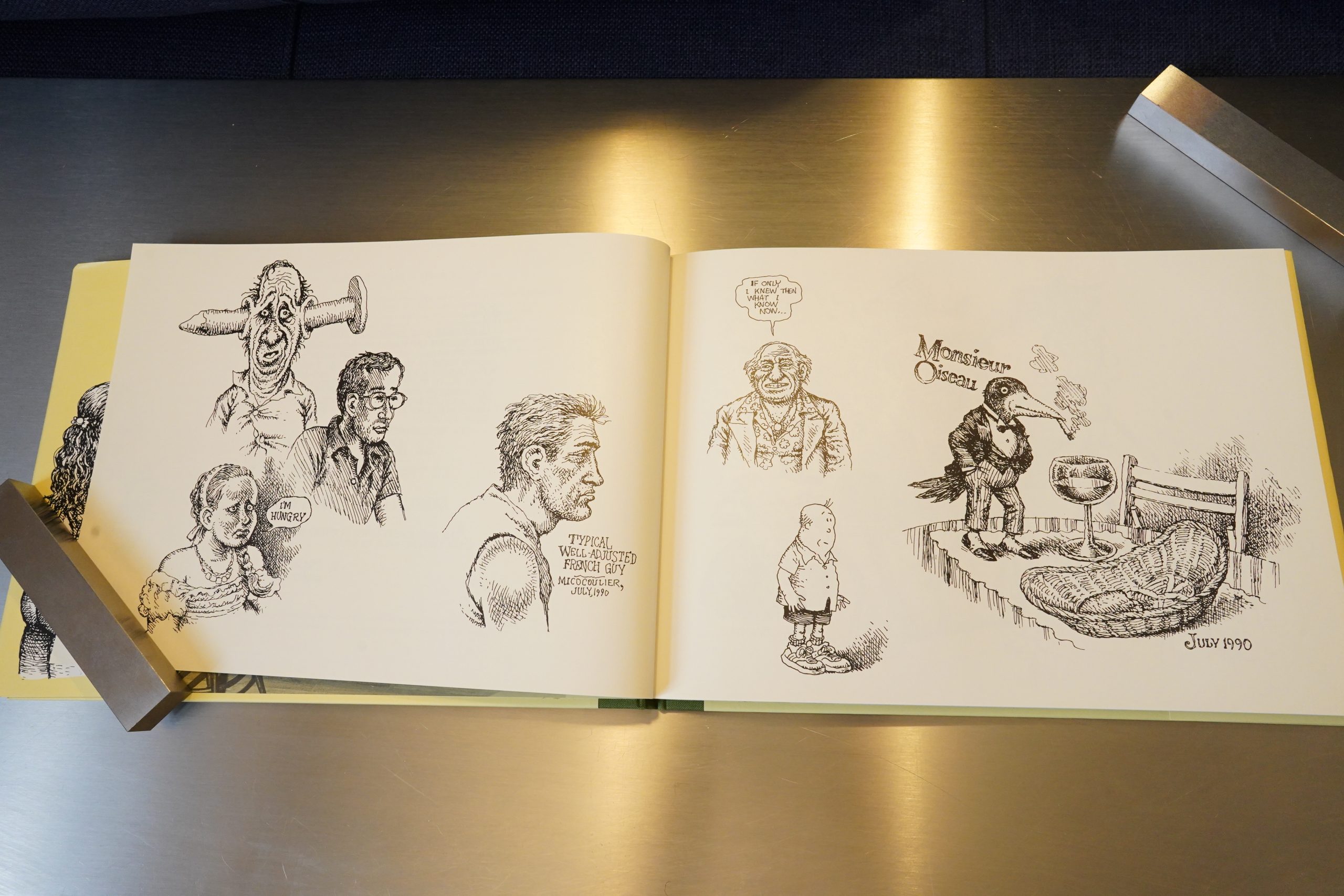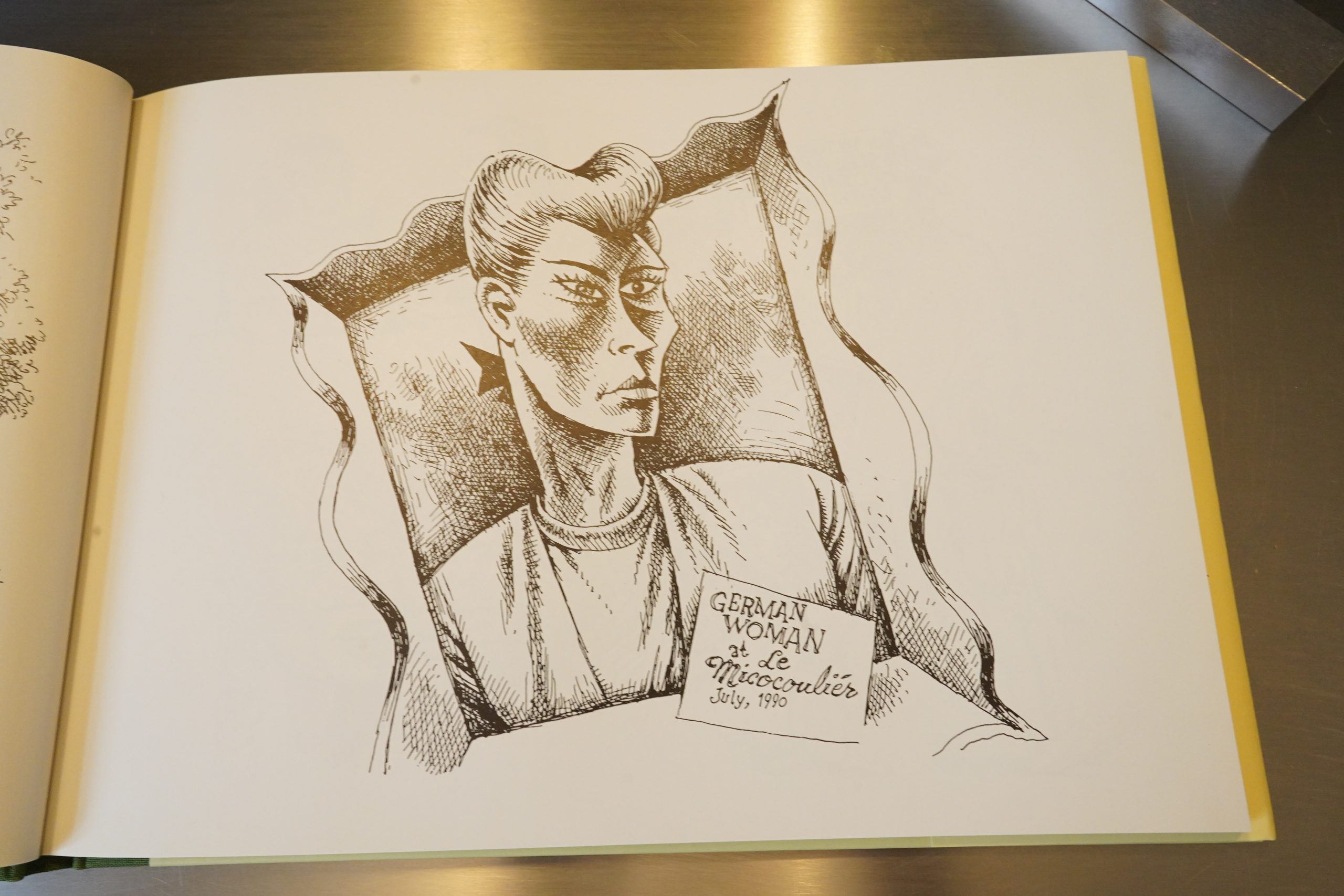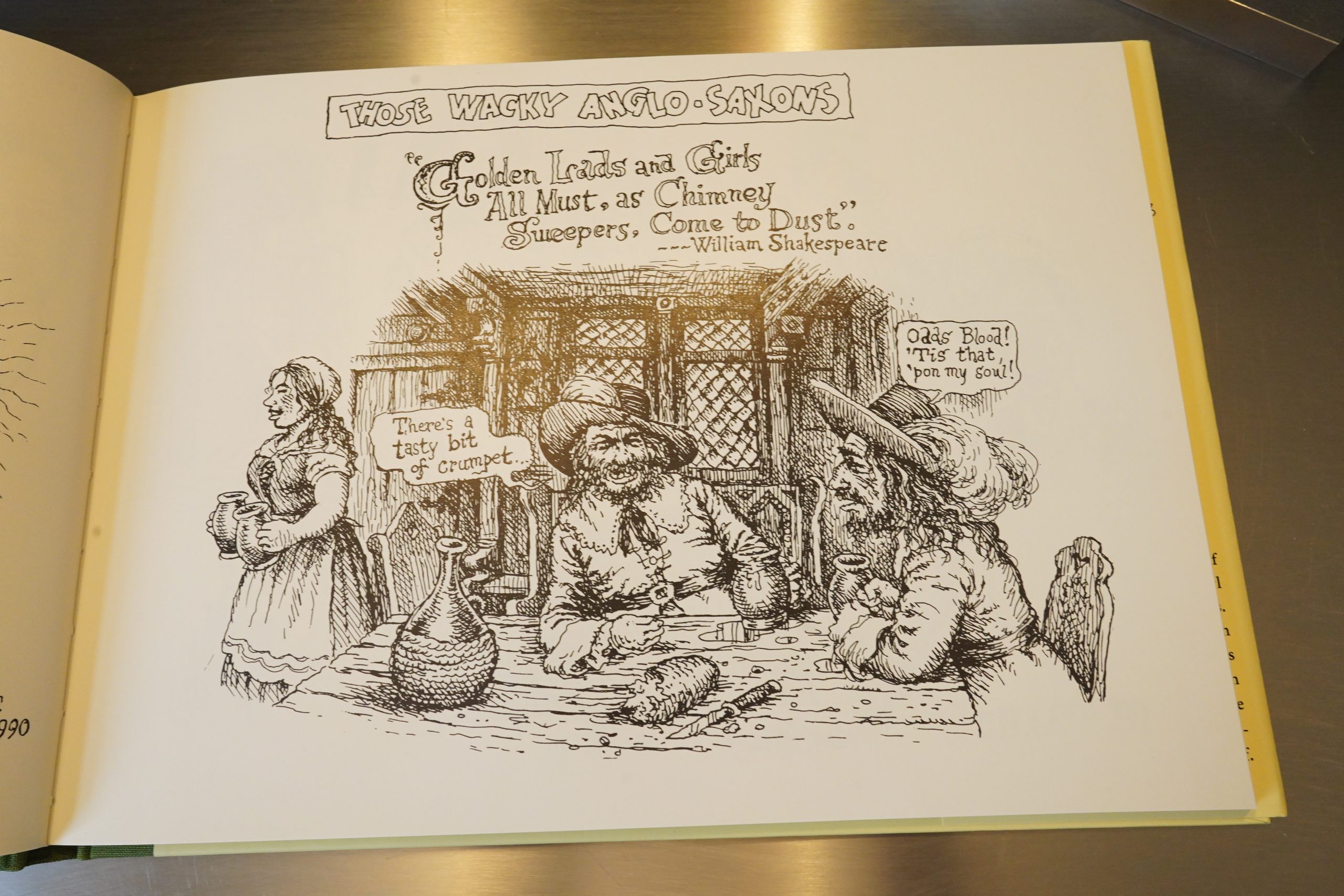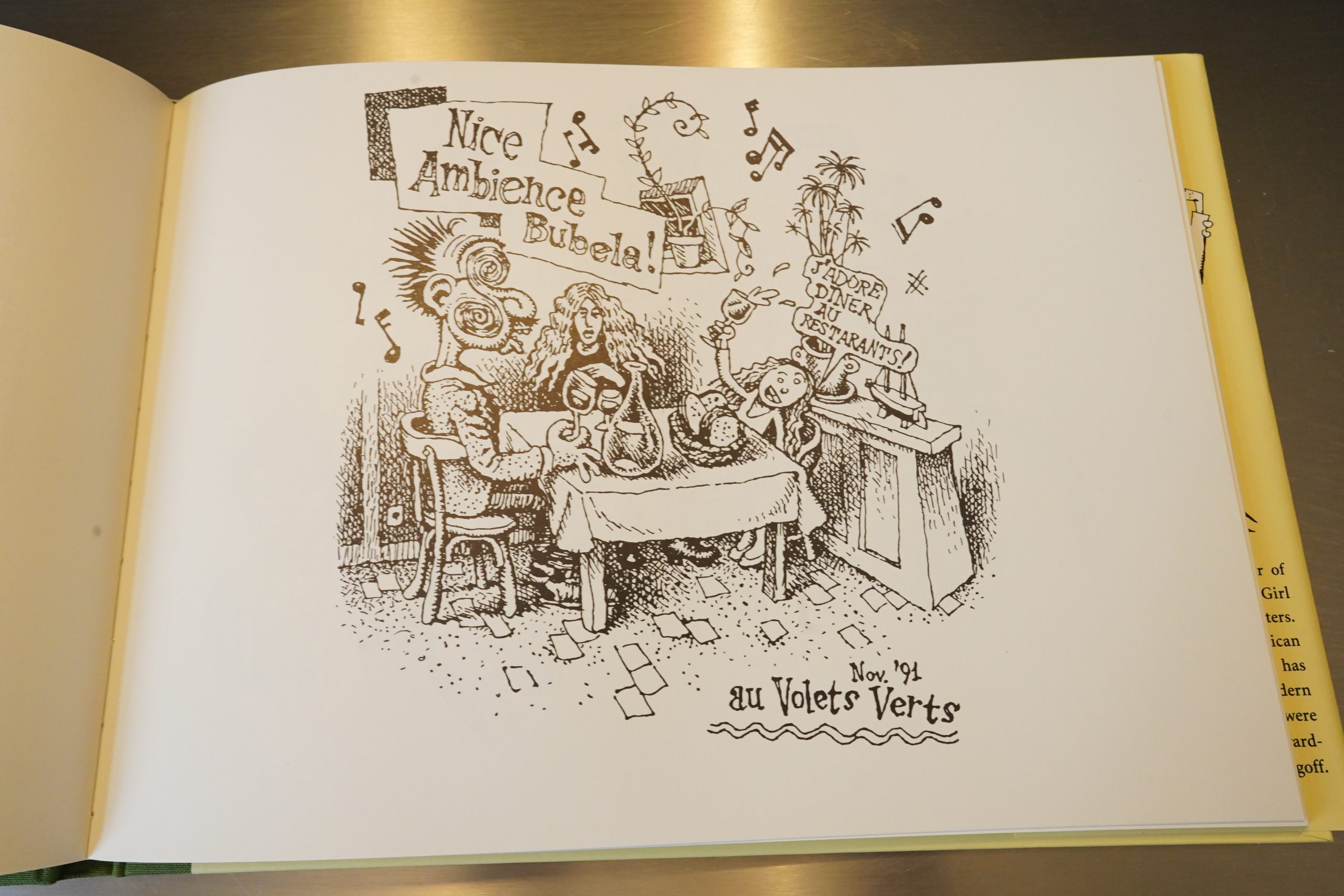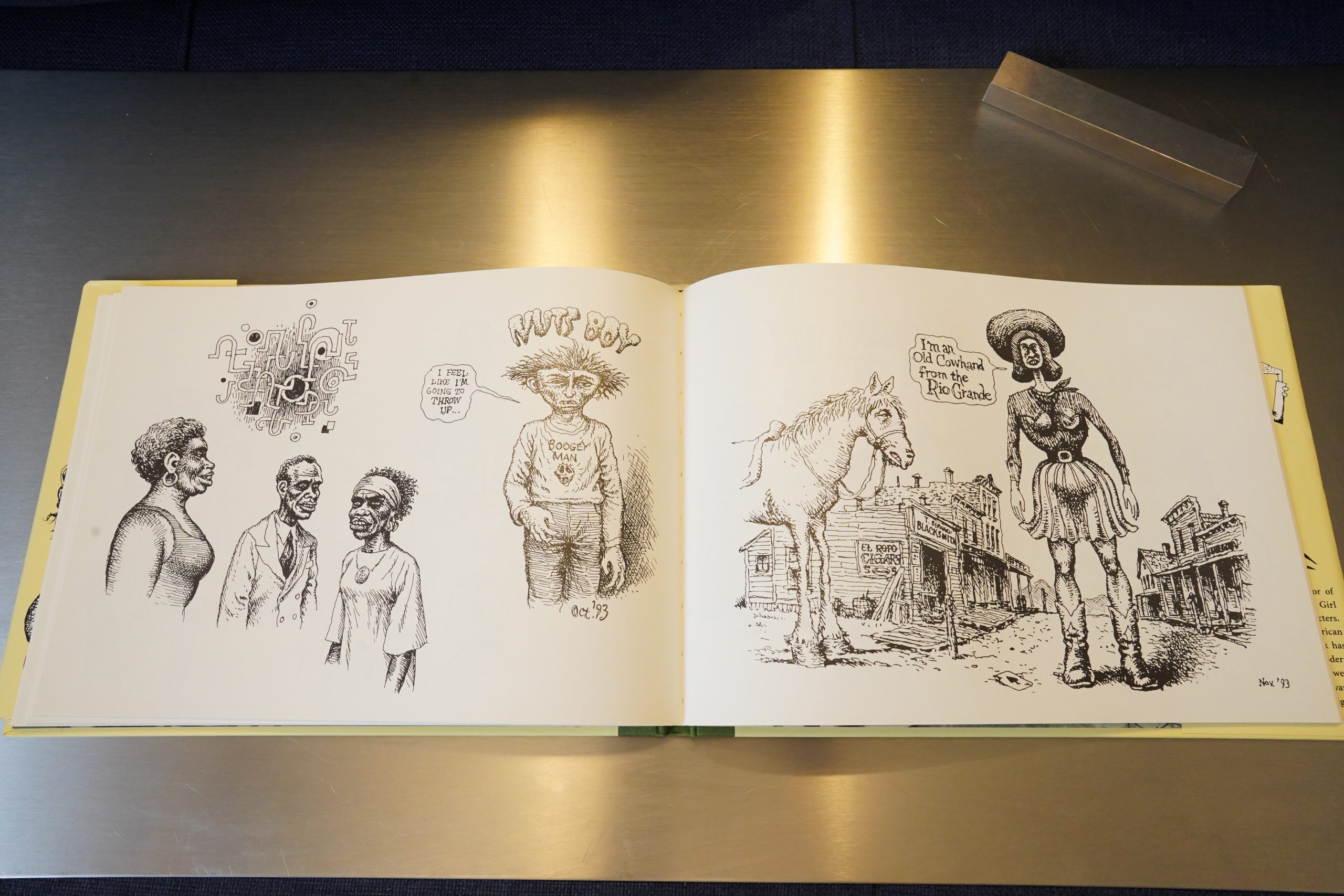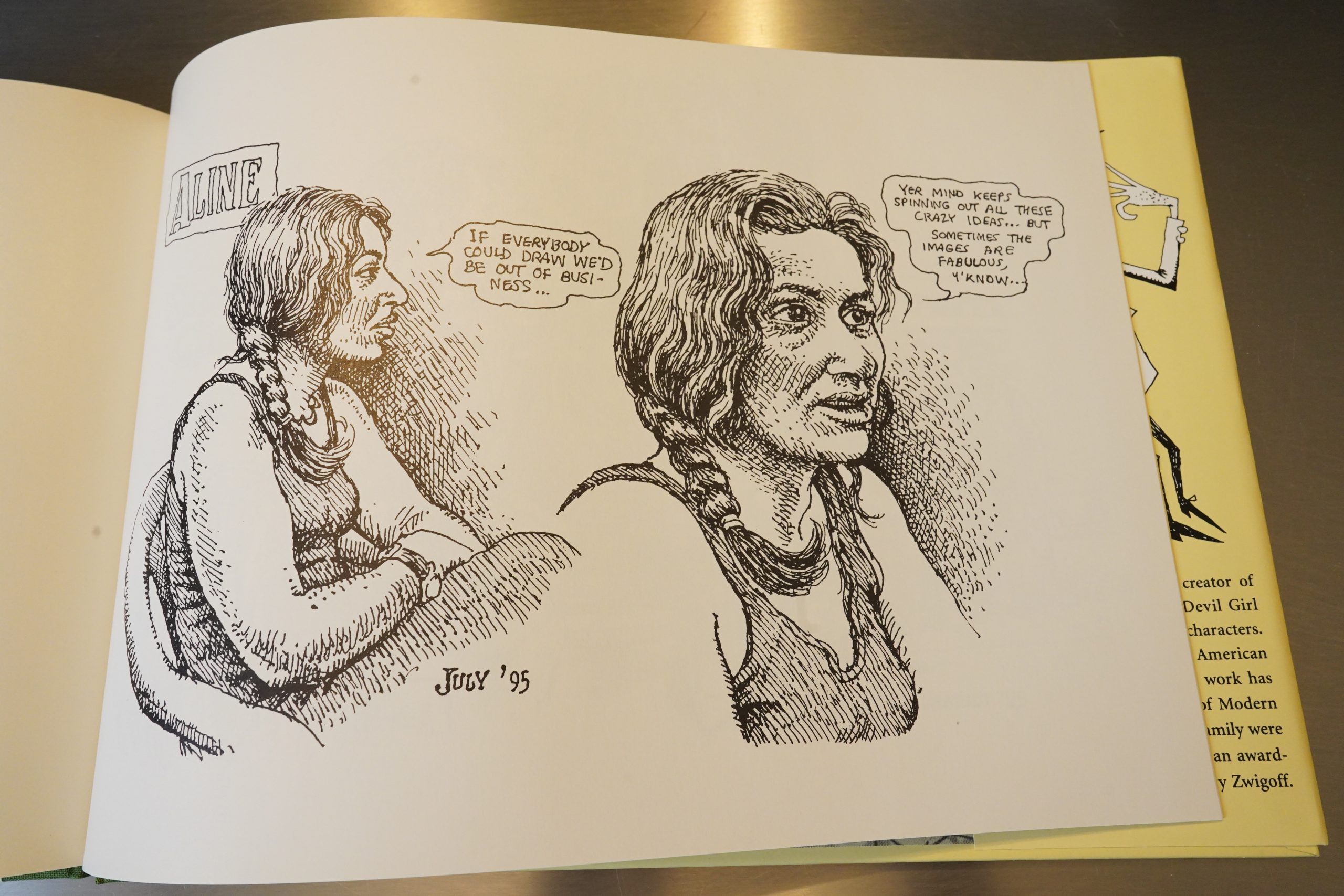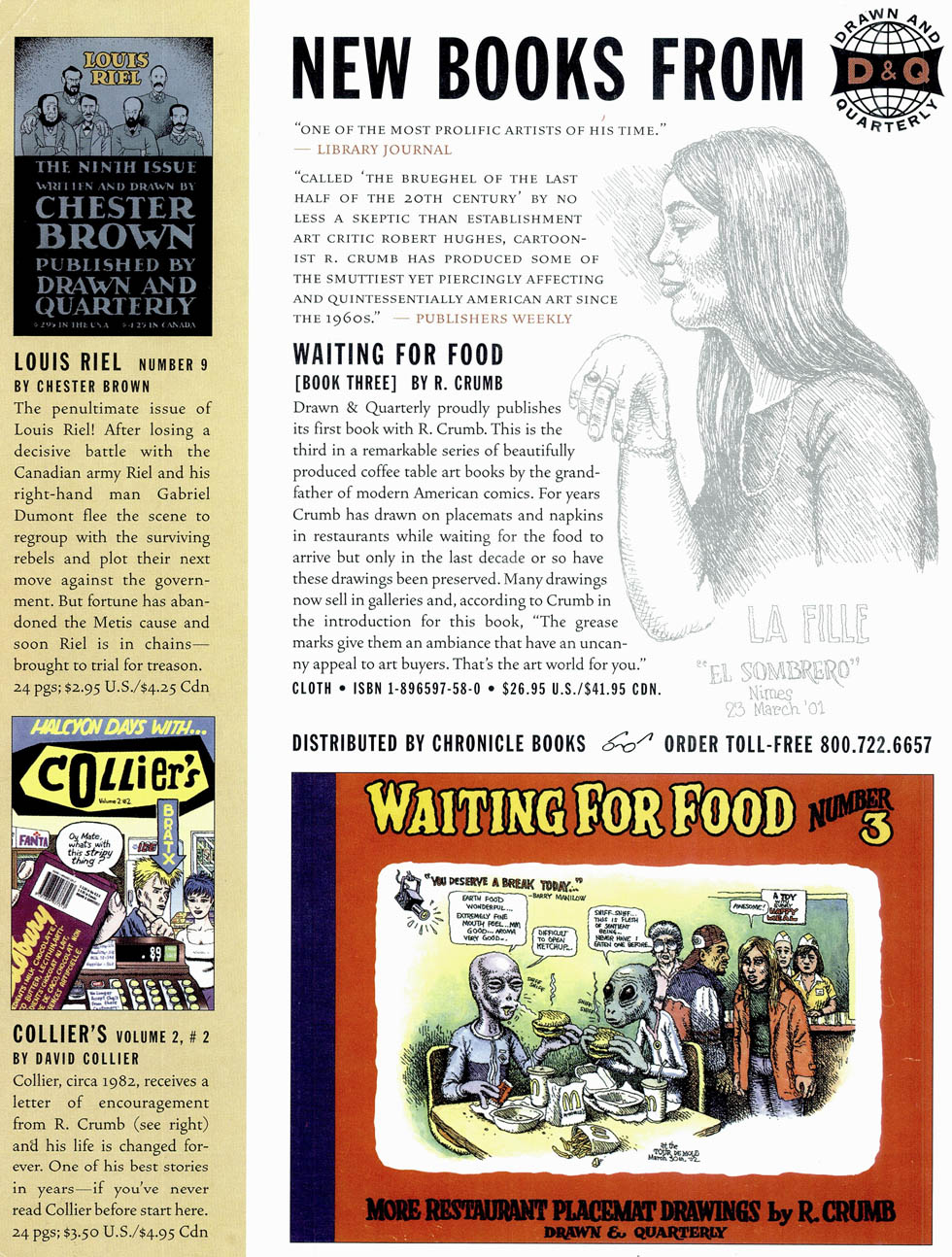Waiting For Food (1995) by Robert Crumb
Very conceptual. So all the drawings here were done on restaurant placemats in three local restaurants, and the restaurants kept the placemats! *gasp*
So you’d expect more throw-away art, but these aren’t doodles.
These drawings are more accomplished than much of what appears in Crumb’s sketchbooks.
It’s pretty great. If you’re a Crumb fan, this is a book you need.
Heh heh.
Many of the drawings feature people from the restaurants, but most are just completely random.
Hey! Aline!
Indeed.
More of these books have been published (by Drawn & Quarterly). I haven’t read them myself.
The Comics Journal #260, page 16:
With its high-profile distributor and
high-profile slate of creators, Drawn &
Quarterly planned to release many of these
books with higher print runs than were
usual for the publisher. Unquestionably,
Drawn Quarterly was putting more
money into play in 2003 than it ever had
before, and it began the year with one of its
biggest gambles and subsequently
flops: Robert Crumb’s Waiting for Food —
Mere Restaurant Placemat Drawings Vol. 3.
Oliveros knew that Crumb was a
revered artist whose popularity transcend-
ed the comics-shop market in alternative-
comics circles, and the publisher had high
hopes for the book, which reproduced
work done by Crumb on restaurant place
mats While the artist was waiting to be
served. Initial orders were below expecta-
tions, however — and then the returns
from bookstores began flowing in.
According to Oliveros, “Our returns are
normally in the 20-percent range, which is
better than most publishers. The Crumb
book had more like 70 percent returns. I
had estimated it would sell more than it
did.
In fact, sales for the $26.95 Crumb
placemat book fell so far short Of expecta-
tions that Oliveros •,vas too embarrassed to
reveal the book’s print run to the Journal.
(It was 10,000.) More than a year after the
book publication, returns are still coming
in, he said sheepishly.
Oliveros didn’t like that article:
The Comics Journal #262, page 13:
Dear editor(s),
It’s been said by many over the years
that Fantagraphics’ ownership of the
Journal prevents the magazine from hav-
ing an unbiased approach regarding its
news coverage of the industry. The news
article on Drawn & Quarterly in issue 260
is just such an example of this bias. In the
past 12 months alone has published
by far the most successful books in its 14-
year history, but you wouldn’t know it
from this article. Michael Dean clearly
had an agenda starting with the ridiculous
headline of D+Q “expiring” and continu-
ing for most of the two pages focusing
exclusively on our one truly disastrous
title. If this was purportedly an article
about the challenges D+Q faced when
expanding into the book trade then Why
did Dean go Out of his way to ignore the
remarkable successes of the company in
the Same period: Chester Brown’s Louis
Riel hardcover selling 11,000 copies in 6
months, Chris Ware’s Acme Datebook sell-
ing 10,000 copies, and Joe Sacco’s The
Fixer selling out of 9,000. Over two-thirds
Of D+Q’s sales now come from the book
trade, compared to almost zero percent as
recently as five years ago. also helped
to pioneer literary graphic novels in the
book trade by creating the ” Drawn &
Quarterly Manifesto” (a guide to selling
graphic novels in the book trade) and by
successfully lobbying BISAC (the com-
mittee that creates the categories used by
book stores) to add “Graphic Novels” as
its own category. Was any of this covered
by the Journal in this article or at any
other time in the past two years? No, in
the article purportedly about Drawn &
Quarterly’s expansion all Dean could
write about, over and over and over again,
was of the one spectacular failure we had
during this period.
The Comics Journal #262, page 17:
In a nut-
shell, the story says is growing and
taking bigger gambles, most of which are
paying off, but the consequences of those
gambles that don’t pay off are greater than
in the past — as illustrated by Waiting for
Food. HOW is this a Story that, as you insist,
reports only “the negative information —
and leaves everything else out”?
0K, no need to answer that. I realize
that most of your grumbling is disingenu-
ous. It’s the job ofa publisher and a publi-
cist to be dissatisfied With all coverage that
fawning puffery. know you’re
secretly delighted at getting so much atten-
tion in the Journal. And now you’ve
tricked me into adding to that publicity
with an article-length reply to your com-
plaint. Between the article, your letter and
my reply, Journal readers have now been
told three times that The Fixer sold out.
ANYWAY.
This is the two hundred and thirty-fifth post in the Entire Kitchen Sink blog series.
